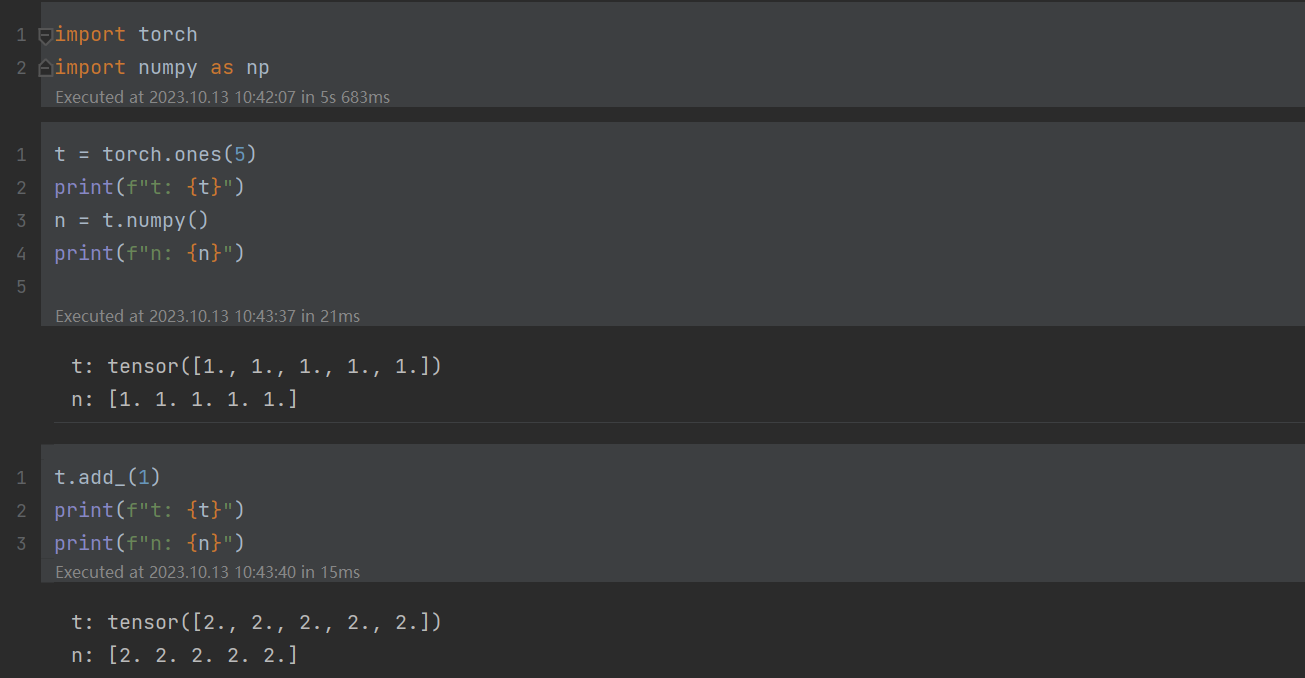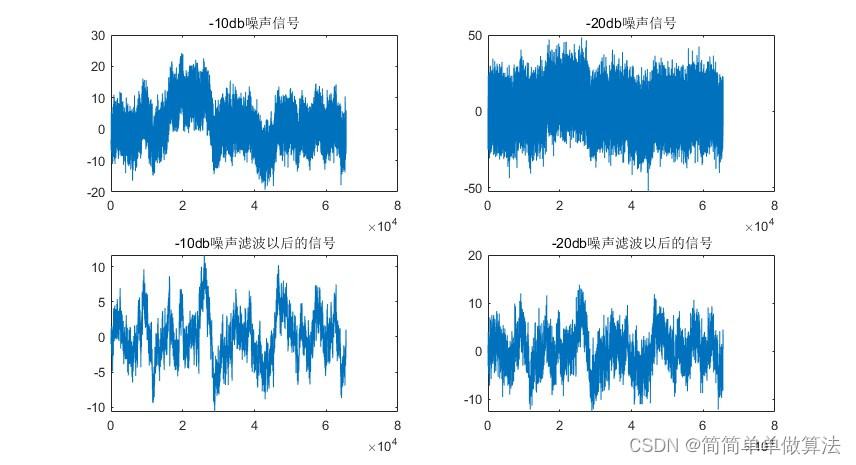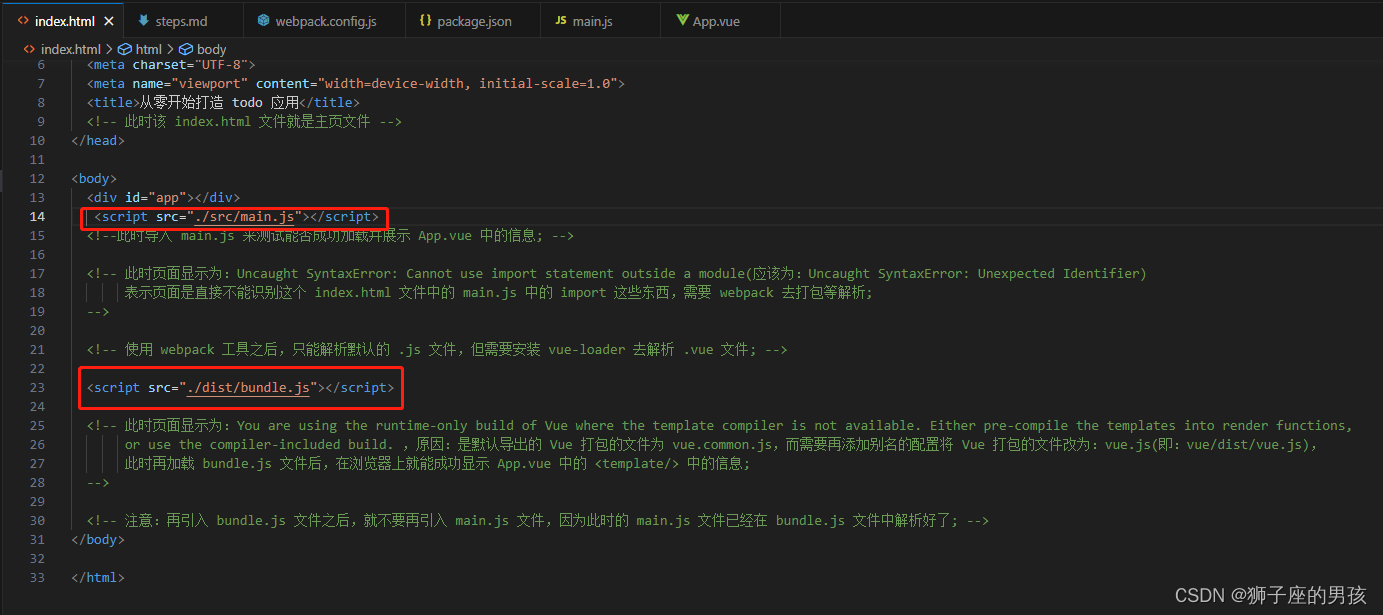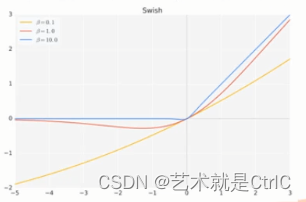tensor与numpy
import torch
import numpy as np
numpy数组 到 张量tensor
n = np.ones(5)
t = torch.from_numpy(n)
NumPy 数组中的变化反映在张量中
np.add(n, 1, out=n)
print(f"t: {t}")
print(f"n: {n}")

张量到 NumPy 数
t = torch.ones(5)
print(f"t: {t}")
n = t.numpy()
print(f"n: {n}")
张量的变化反映在 NumPy 数组中。
t.add_(1)
print(f"t: {t}")
print(f"n: {n}")

torch
data = [[1, 2],[3, 4]]
x_data = torch.tensor(data)
x_ones = torch.ones_like(x_data) # retains the properties of x_data
print(f"Ones Tensor: \n {x_ones} \n")x_rand = torch.rand_like(x_data, dtype=torch.float) # overrides the datatype of x_data
print(f"Random Tensor: \n {x_rand} \n")
shape = (2,3,)
rand_tensor = torch.rand(shape)
ones_tensor = torch.ones(shape)
zeros_tensor = torch.zeros(shape)
张量属性
tensor = torch.rand(3,4)print(f"Shape of tensor: {tensor.shape}")
print(f"Datatype of tensor: {tensor.dtype}")
print(f"Device tensor is stored on: {tensor.device}")
CPU转GPU
if torch.cuda.is_available():tensor = tensor.to("cuda")
索引和切片
tensor = torch.ones(4, 4)
print(f"First row: {tensor[0]}")
print(f"First column: {tensor[:, 0]}")
print(f"Last column: {tensor[..., -1]}")
tensor[:,1] = 0
print(tensor)
张量连接
t1 = torch.cat([tensor, tensor, tensor], dim=1)
print(t1)
算数运算
矩阵乘法,对矩阵不了解的,可以看这篇文章
y1 = tensor @ tensor.T
y2 = tensor.matmul(tensor.T)y3 = torch.rand_like(y1)
torch.matmul(tensor, tensor.T, out=y3)
普通乘法,下面是计算元素积。z1, z2, z3的值是一样的
z1 = tensor * tensor
z2 = tensor.mul(tensor)z3 = torch.rand_like(tensor)
torch.mul(tensor, tensor, out=z3)











